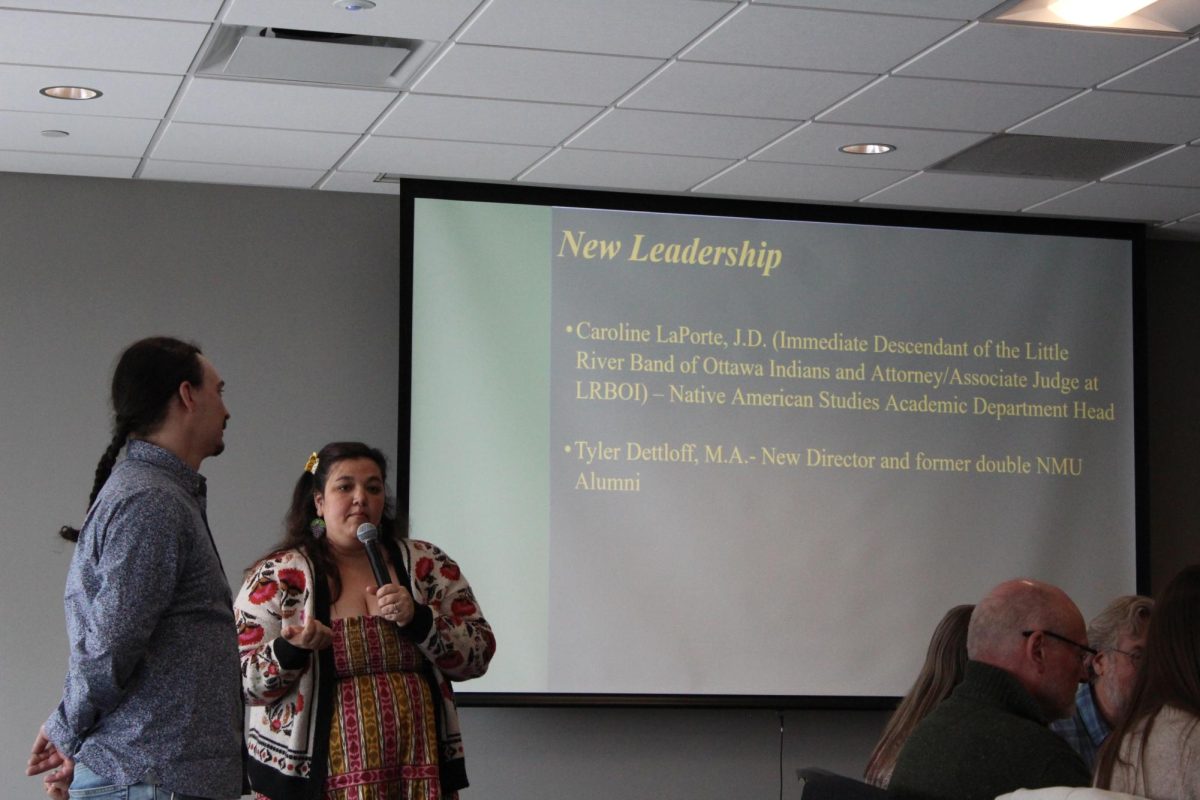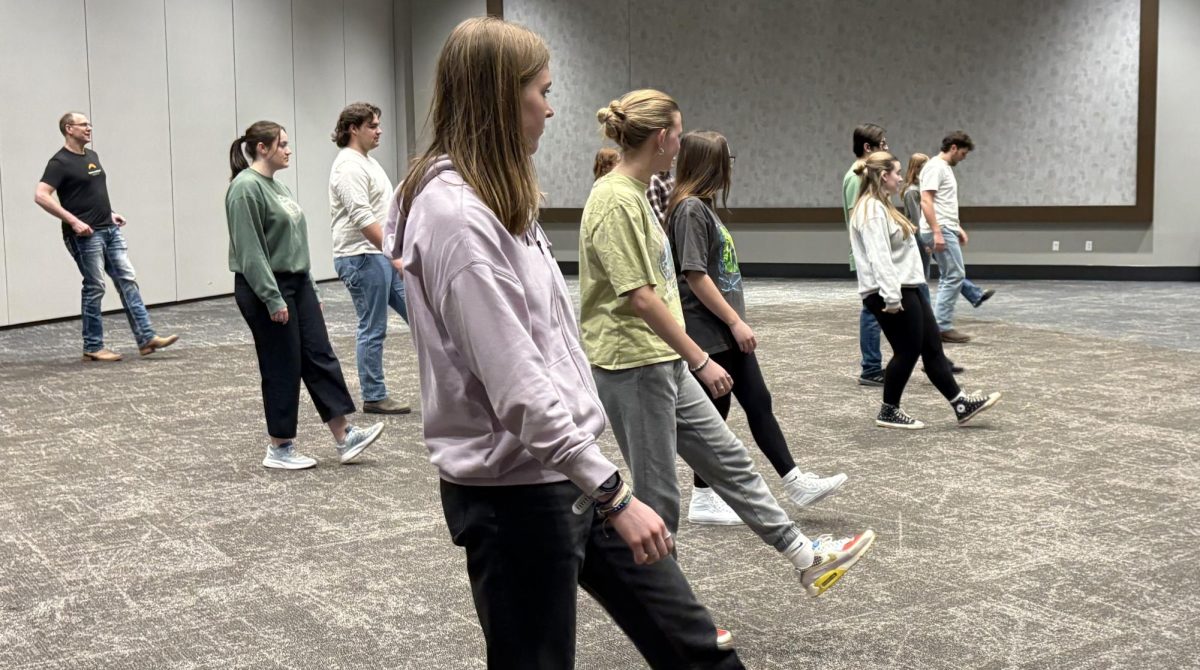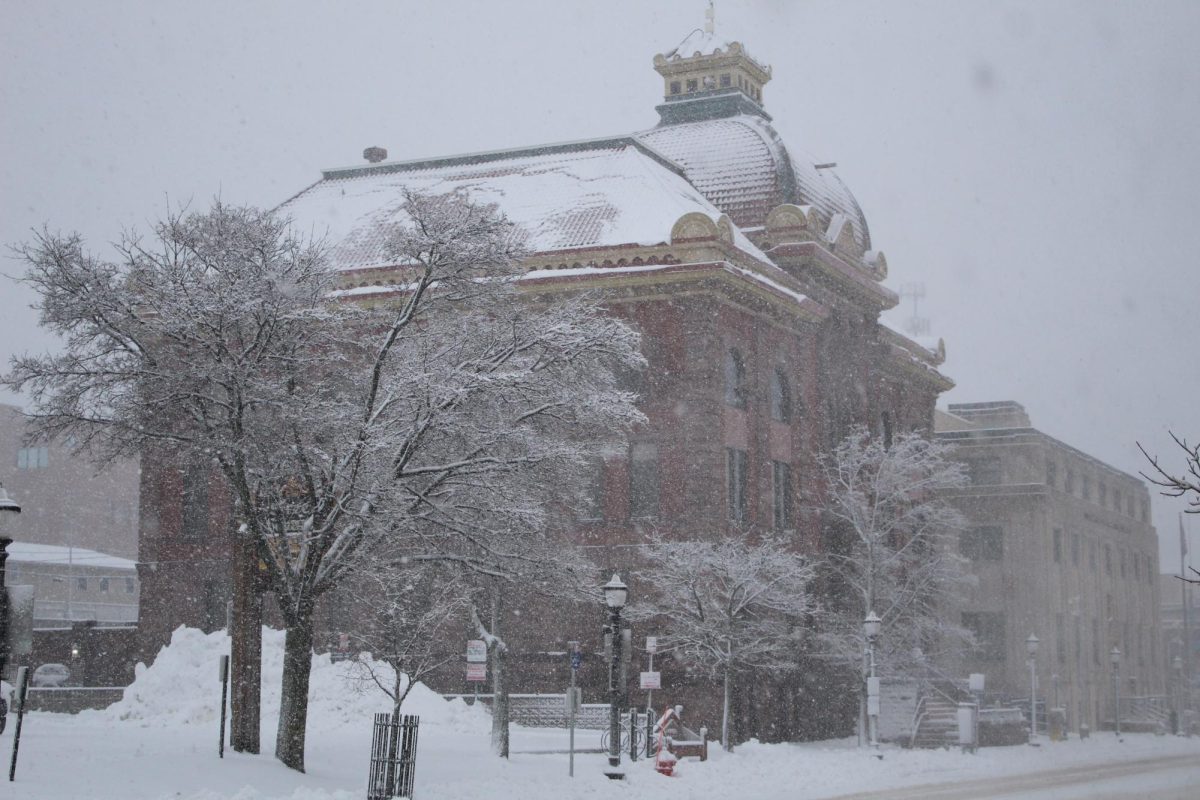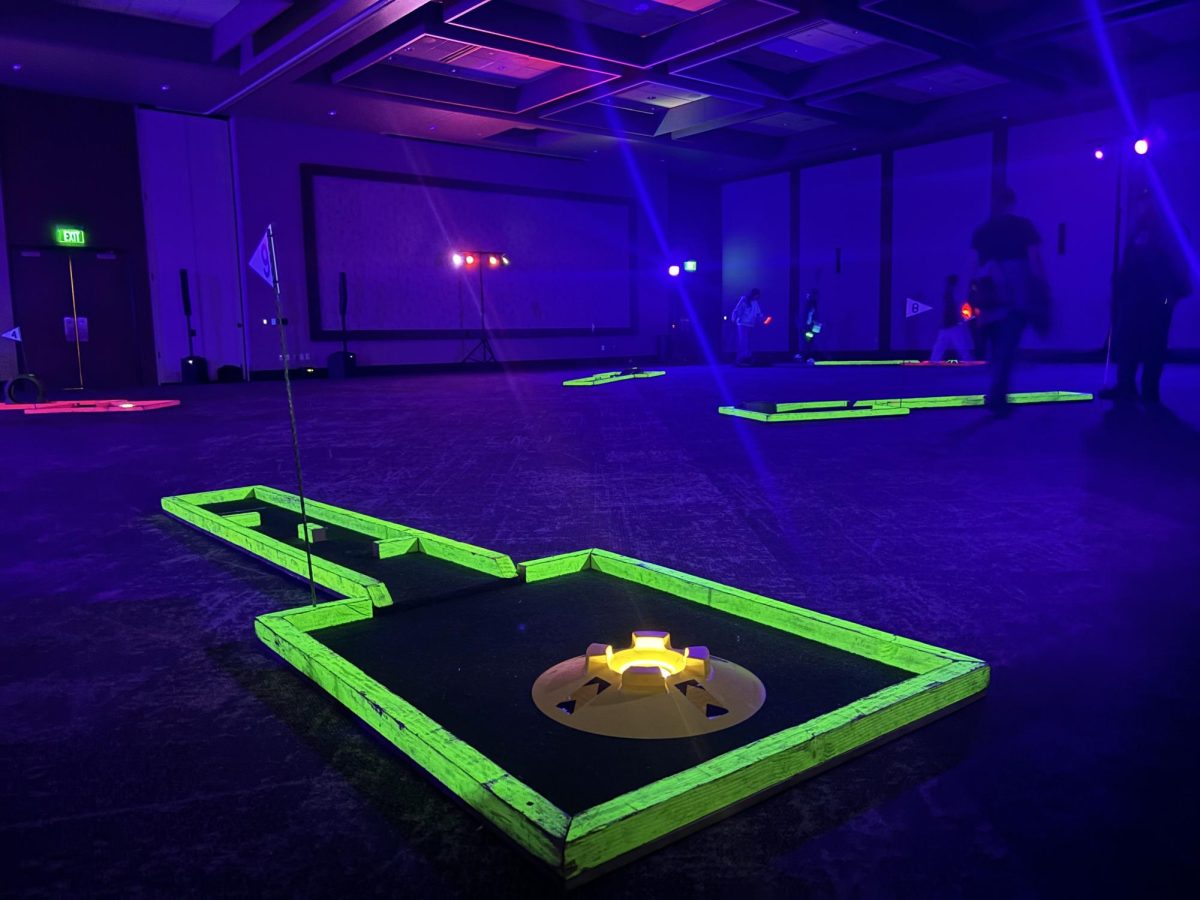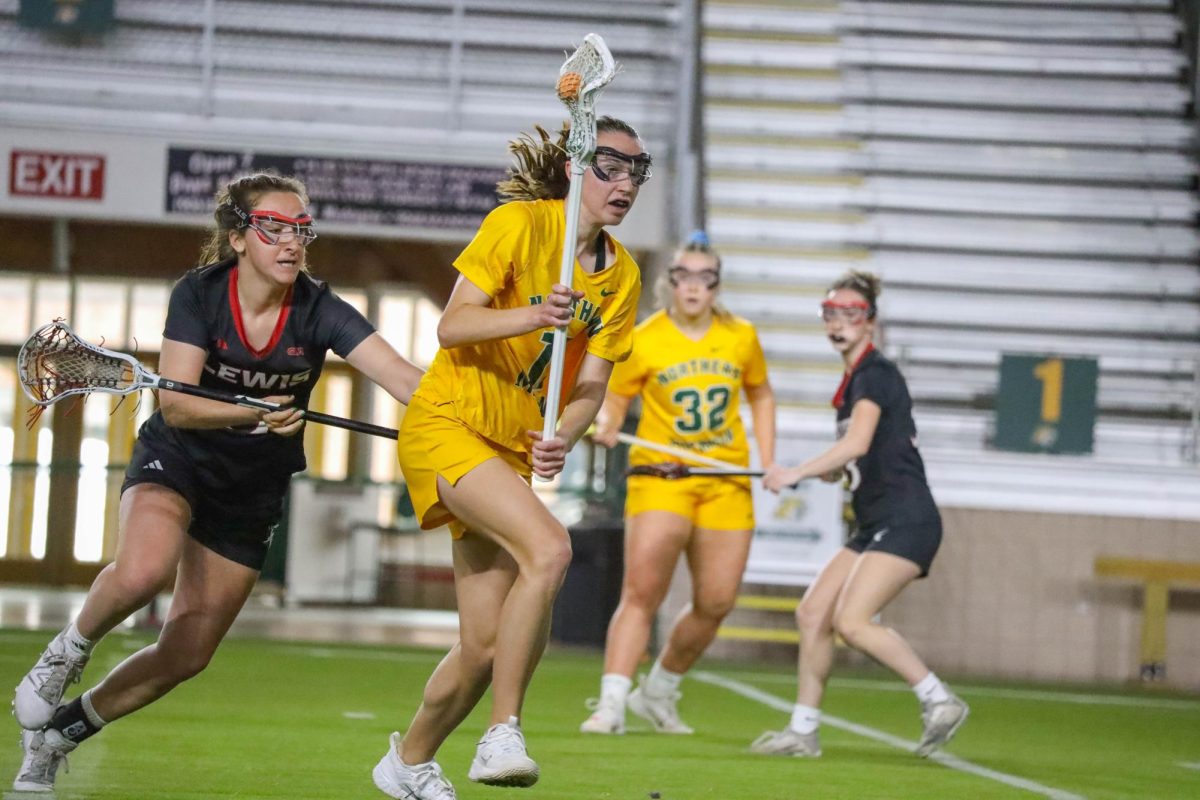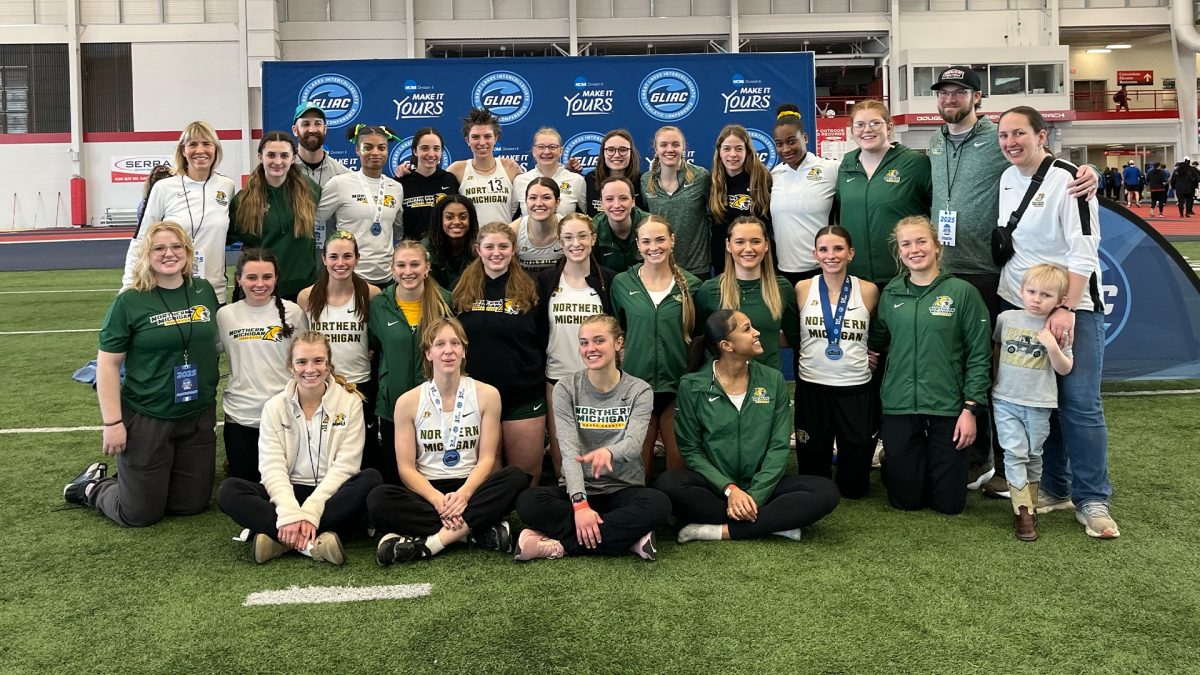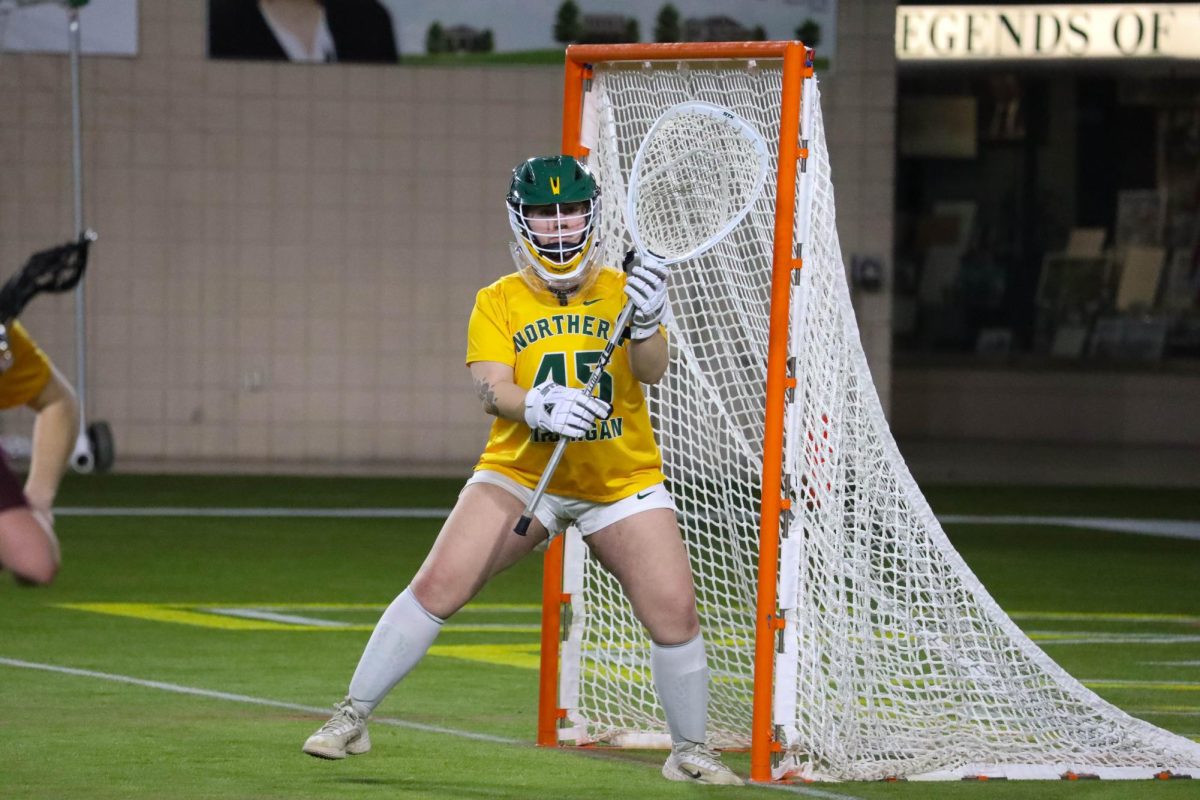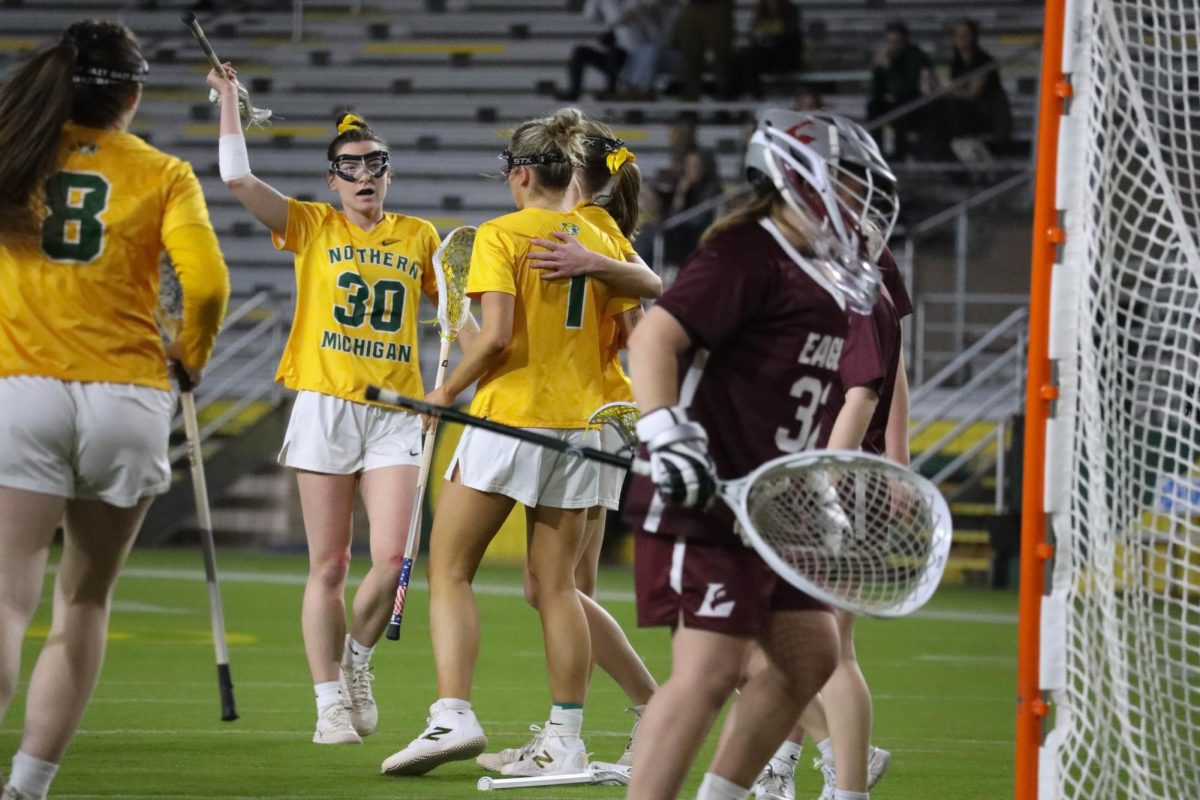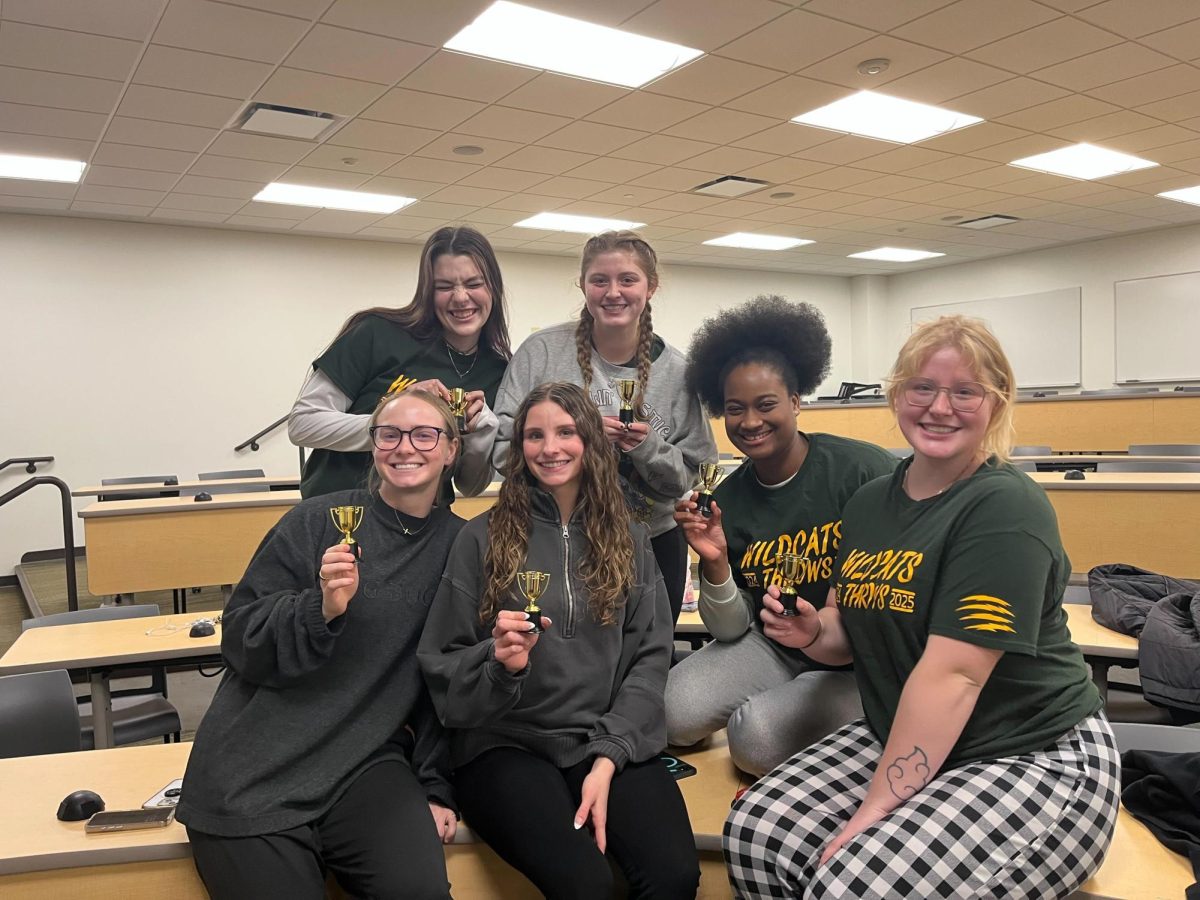Famous artist Alexis Rockman’s visit to Marquette in October has come and gone, but his artwork continues to impact education.
NMU is collaborating with contemporary American artist Rockman and the Grand Rapids Art Museum (GRAM) to offer an online multimedia resource for teachers based on Rockman’s paintings of the Great Lakes.
The realist paintings depict natural beauty while also bringing attention to ecological issues like pollution, invasive species and climate change. Rockman’s “The Great Lakes Cycle,” premiered at GRAM on Jan. 27 and will be on display until April 29. A preview of Rockman’s work was exhibited at NMU’s DeVos Art Museum, and Rockman visited campus from Oct. 18 to 20.
NMU professor Jill Leonard was one of the biologists Rockman consulted during his research, and she saw how his artwork could be used for educational programs as well as fine art, she said.
“His pictures are hugely full of content… about the Great Lakes, so they’re art, but they’re also information containing,” Leonard said. “The educators have been excited about this because it’s an accessible way to teach a lot of different kinds of things about the Great Lakes. Whatever you’re interested in talking about, there’s a way to use these paintings.”
The paintings depict specific animals, scientific phenomena and historical subjects, and each is accompanied by a key to indicate these details. Leonard, art and design professors Taimur Cleary and Daric Christian, along with a team of undergraduate students, developed an online textbook for K-12 classroom use and for the public that examines the artwork and subject matter in greater detail.
“Rockman identifies stuff, but he doesn’t really tell you the ins and outs of it,” Leonard said. “What my collaborators and I wanted to do was give you more background so you’d have a little clearer idea of what direction to go in.”
The online resource includes short essays, images and videos, with contributions from experts in dozens of fields, discussing topics from history to biology to art methods and interpretation.
The resource is available for $50 for a first-year subscription and $25 for a renewed subscription. Part of it is available free of charge to members of NMU’s Electronic Access Network. It can be found online at nmu.edu/biology/great-lakes-cycle.



